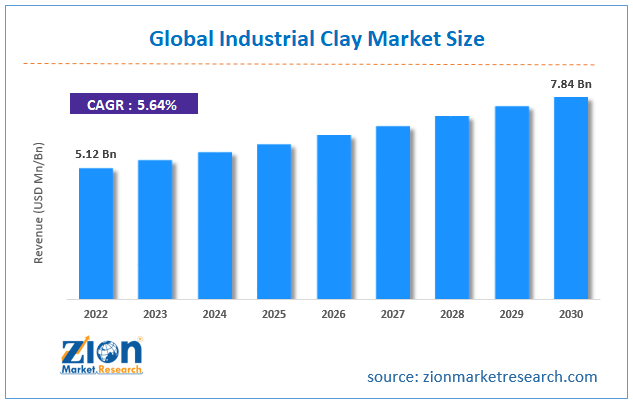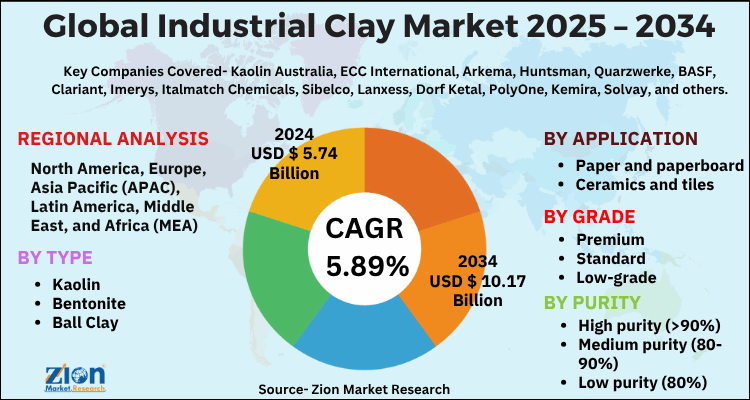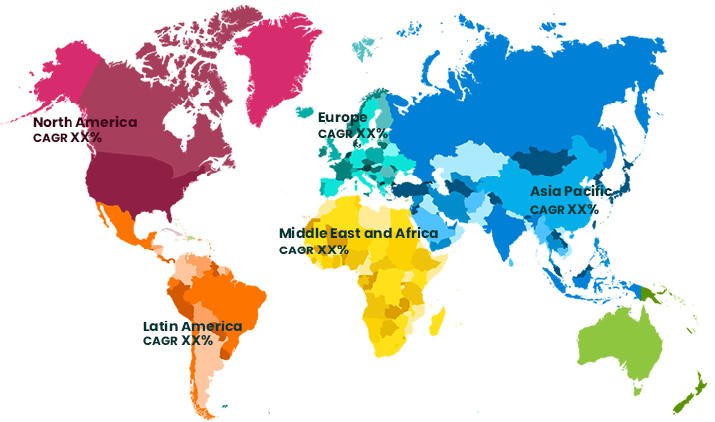Global Industrial Clay Market Size, Share, Growth Analysis Report - Forecast 2034

Industrial Clay Market By Type (Kaolin, Bentonite, Ball Clay, Fire Clay, Others), By Application (Paper and paperboard, Ceramics and tiles, Foundry and refractories, Paints and coatings, Pharmaceuticals, Others), By Grade (Premium, Standard, Low-grade), By Purity (High purity (>90%), Medium purity (80-90%), Low purity (80%)), By Particle Size (Coarse (-20 mesh), Fine (20-200 mesh) , Ultrafine (>200 mesh)), and By Region: Global and Regional Industry Overview, Market Intelligence, Comprehensive Analysis, Historical Data, and Forecasts 2025 - 2034
| Market Size in 2024 | Market Forecast in 2034 | CAGR (in %) | Base Year |
|---|---|---|---|
| USD 5.74 Billion | USD 10.17 Billion | 5.89% | 2024 |
Industrial Clay Market: Industry Perspective
The global industrial clay market size was worth around USD 5.74 Billion in 2024 and is predicted to grow to around USD 10.17 Billion by 2034 with a compound annual growth rate (CAGR) of roughly 5.89% between 2025 and 2034. The report analyzes the global industrial clay market's drivers, restraints/challenges, and the effect they have on the demands during the projection period. In addition, the report explores emerging opportunities in the industrial clay industry.
Industrial Clay Market: Overview
Industrial clay is also known as industrial minerals or clay minerals. It is a group of naturally occurring minerals that exhibit specific properties and are used extensively in several industrial applications. Primarily, they are composed of hydrated silicates of aluminum along with other minerals such as quartz, feldspar, and mica. Industrial clay is formed through the process of decomposition or weathering of rocks, especially granite and other forms of feldspar-rich rocks. Some of the main minerals included in the group are kaolinite, montmorillonite, illite, and bentonite. They vary in physical properties, chemical composition, and industrial uses. Industrial clay offers excellent plasticity. It can be easily molded when mixed with water thus making it a crucial component in several applications such as the manufacturing of bricks, tiles, pottery, and other ceramic products. The industrial clay industry is expected to grow at a steady rate during the forecast period.
Key Insights
- As per the analysis shared by our research analyst, the global industrial clay market is estimated to grow annually at a CAGR of around 5.89% over the forecast period (2025-2034).
- Regarding revenue, the global industrial clay market size was valued at around USD 5.74 Billion in 2024 and is projected to reach USD 10.17 Billion by 2034.
- The industrial clay market is projected to grow at a significant rate due to rising demand for sustainable materials, rapid urbanization and infrastructure development, and growing applications in various sectors such as paper, paints, pharmaceuticals, and oil & gas.
- Based on Type, the Kaolin segment is expected to lead the global market.
- On the basis of Application, the Paper and paperboard segment is growing at a high rate and will continue to dominate the global market.
- Based on the Grade, the Premium segment is projected to swipe the largest market share.
- By Purity, the High purity (>90%) segment is expected to dominate the global market.
- In terms of Particle Size, the Coarse (-20 mesh) segment is anticipated to command the largest market share.
- Based on region, Asia-Pacific is predicted to dominate the global market during the forecast period.
Industrial Clay Market: Growth Drivers
Increasing construction rate to drive market growth
The global industrial clay market is projected to grow owing to the rising rate of construction across the globe. In recent times, the construction sector has witnessed tremendous growth propelled by several factors and the primary being the increase in infrastructure development projects in developed and developing nations. As of 2023, several countries are looking to upgrade regional architecture which includes activities undertaken by government agencies and private companies. With the changing global political dynamics, several emerging nations have leveraged previously unexplored opportunities for their benefit. The currently active Belt and Road Initiative by China is a global infrastructure development project passing through several countries. Industrial clay is used extensively in the construction sector while it is used to manufacture bricks, tiles, and cement production. This trend is expected to help the industry reach new heights during the forecast period.
Industrial Clay Market: Restraints
Growing environmental concerns to restrict the market growth
The global industrial clay industry is expected to come across certain growth restrictions owing to the growing concerns over the environmental impact of industrial clay production. For instance, mining operations are proven to disrupt ecosystems. These activities impact water bodies and lead to soil erosion. In addition to this, the disposal of clay waste products and the subsequent release of fine particles during processing directly affects the environmental quality. As the world is demanding sustainable solutions, market players may invest in eco-friendly alternatives to industrial clay.
Industrial Clay Market: Opportunities
Emerging applications and green initiatives to provide growth opportunities
The global industrial clay market players are exploring additional applications of industrial clay. This is related to product portfolio expansion and diversification. For instance, clay minerals are receiving extreme attention from the research community to explore the application of clay minerals in water purification technologies and energy storage systems along with pharmaceutical formulations. Furthermore, industrial clay can be considered an environment-friendly substitute for synthetic materials used in the packaging sector.
Industrial Clay Market: Challenges
Price volatility to challenge market expansion
One of the primary challenges that greatly impact the global sales volume is the price sensitivity and volatility of industrial clay. The prices of the raw materials used in the production of this form of clay can vary depending on factors such as supply-demand dynamics, transportation costs, and global economic conditions. As the price fluctuates, it directly impacts the profitability of the industrial clay business giving rise to extreme competitiveness. Furthermore, the availability of high-grade industrial clay deposits differs geographically which further impacts the industrial clay industry growth rate.
Industrial Clay Market: Segmentation Analysis
The global industrial clay market is segmented based on Type, Application, Grade, Purity, Particle Size, and region.
Based on Type, the global industrial clay market is divided into Kaolin, Bentonite, Ball Clay, Fire Clay, Others.
On the basis of Application, the global industrial clay market is bifurcated into Paper and paperboard, Ceramics and tiles, Foundry and refractories, Paints and coatings, Pharmaceuticals, Others.
By Grade, the global industrial clay market is split into Premium, Standard, Low-grade.
In terms of Purity, the global industrial clay market is categorized into High purity (>90%), Medium purity (80-90%), Low purity (80%).
By Particle Size, the global Industrial Clay market is divided into Coarse (-20 mesh), Fine (20-200 mesh) , Ultrafine (>200 mesh).
Industrial Clay Market: Report Scope
| Report Attributes | Report Details |
|---|---|
| Report Name | Industrial Clay Market |
| Market Size in 2024 | USD 5.74 Billion |
| Market Forecast in 2034 | USD 10.17 Billion |
| Growth Rate | CAGR of 5.89% |
| Number of Pages | PagesNO |
| Key Companies Covered | Kaolin Australia, ECC International, Arkema, Huntsman, Quarzwerke, BASF, Clariant, Imerys, Italmatch Chemicals, Sibelco, Lanxess, Dorf Ketal, PolyOne, Kemira, Solvay, and others. |
| Segments Covered | By Type, By Application, By Grade, By Purity, By Particle Size, and By Region |
| Regions Covered | North America, Europe, Asia Pacific (APAC), Latin America, The Middle East and Africa (MEA) |
| Base Year | 2024 |
| Historical Year | 2020 to 2024 |
| Forecast Year | 2025 to 2034 |
| Customization Scope | Avail customized purchase options to meet your exact research needs. Request For Customization |
Industrial Clay Market: Regional Analysis
Asia-Pacific to register the highest growth
The global industrial clay market is expected to witness the highest growth in Asia-Pacific driven by countries such as South Korea, India, China, and Japan. These countries are registering a rampant rate of industrialization, urbanization, and infrastructure development which has caused higher demand for industrial clay. Furthermore, Asia-Pacific has a robust ceramic industry with several products being exported to other parts of the world. The regional governments are focusing on improving their strengths and this could lead to better exports rate in terms of ceramic products.
China is the world’s largest producer of ceramic and its products. North America is anticipated to grow at a significant CAGR due to the expansion of its construction sector along with growing applications of industrial clay in the paper and packaging industry. Latin America has a growing industrial clay market, with countries like Brazil, Mexico, and Argentina being key players.
Recent Developments:
- In March 2023, Materrup and Vicat announced a joint venture. The companies will work together toward industrializing the production and accelerating marketing activities for the former’s Clay Cement 1 (MCC1) raw clay cement. As per reports by the Le Moniteur newspaper, the technology used in the production is based on an activator and precursor mixture which aids in the removal of clay calcification
- In December 2022, Clay Craft India, one of India’s largest ceramic tableware companies, inaugurated its manufacturing unit at Manda in Rajasthan. Currently, the new facility has a production capacity of 50,000 pieces per day but when it will be completely operational, the capacity range may go up to 200,000 pieces per day
- In May 2022, Society for Technology and Action for Rural Advancement (TARA) and JK Lakshmi Cement announced a partnership aiming to integrate calcined clay technology with its operations to ensure the production of limestone calcined clay cement (LC3)
Industrial Clay Market: Competitive Analysis
The report provides a company market share analysis to give a broader overview of the key market players. In addition, the report also covers key strategic developments of the market, including acquisitions & mergers, new product launches, agreements, partnerships, collaborations & joint ventures, research & development, and regional expansion of major participants involved in the industrial clay market on a global and regional basis.
The global industrial clay market is dominated by players like:
- Kaolin Australia
- ECC International
- Arkema
- Huntsman
- Quarzwerke
- BASF
- Clariant
- Imerys
- Italmatch Chemicals
- Sibelco
- Lanxess
- Dorf Ketal
- PolyOne
- Kemira
- Solvay
The global industrial clay market is segmented as follows;
By Type
- Kaolin
- Bentonite
- Ball Clay
- Fire Clay
- Others
By Application
- Paper and paperboard
- Ceramics and tiles
- Foundry and refractories
- Paints and coatings
- Pharmaceuticals
- Others
By Grade
- Premium
- Standard
- Low-grade
By Purity
- High purity (>90%)
- Medium purity (80-90%)
- Low purity (80%)
By Particle Size
- Coarse (-20 mesh)
- Fine (20-200 mesh)
- Ultrafine (>200 mesh)
By Region
- North America
- The U.S.
- Canada
- Europe
- France
- The UK
- Spain
- Germany
- Italy
- Rest of Europe
- Asia Pacific
- China
- Japan
- India
- South Korea
- Southeast Asia
- Rest of Asia Pacific
- Latin America
- Brazil
- Mexico
- Rest of Latin America
- Middle East & Africa
- GCC
- South Africa
- Rest of Middle East & Africa
Table Of Content
Methodology
FrequentlyAsked Questions
Industrial clay is also known as industrial minerals or clay minerals. It is a group of naturally occurring minerals that exhibit specific properties and are used extensively in several industrial applications.
The global industrial clay market is expected to grow due to increasing demand in construction, ceramics, and paints & coatings industries, along with its eco-friendly properties and cost-effectiveness in manufacturing processes.
According to a study, the global industrial clay market size was worth around USD 5.74 Billion in 2024 and is expected to reach USD 10.17 Billion by 2034.
The global industrial clay market is expected to grow at a CAGR of 5.89% during the forecast period.
Asia-Pacific is expected to dominate the industrial clay market over the forecast period.
Leading players in the global industrial clay market include Kaolin Australia, ECC International, Arkema, Huntsman, Quarzwerke, BASF, Clariant, Imerys, Italmatch Chemicals, Sibelco, Lanxess, Dorf Ketal, PolyOne, Kemira, Solvay, among others.
The report explores crucial aspects of the industrial clay market, including a detailed discussion of existing growth factors and restraints, while also examining future growth opportunities and challenges that impact the market.
HappyClients
Zion Market Research
Tel: +1 (302) 444-0166
USA/Canada Toll Free No.+1 (855) 465-4651
3rd Floor,
Mrunal Paradise, Opp Maharaja Hotel,
Pimple Gurav, Pune 411061,
Maharashtra, India
Phone No +91 7768 006 007, +91 7768 006 008
US OFFICE NO +1 (302) 444-0166
US/CAN TOLL FREE +1 (855) 465-4651
Email: sales@zionmarketresearch.com
We have secured system to process your transaction.
Our support available to help you 24 hours a day, five days a week.
Monday - Friday: 9AM - 6PM
Saturday - Sunday: Closed







